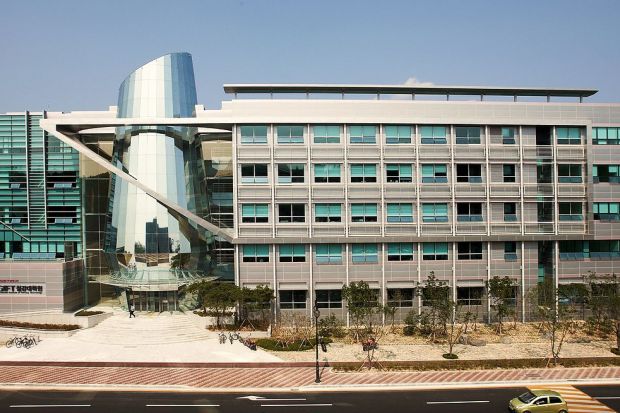POSTECH: Nanomotors for Glucose-Powered Catalytic Motion
Metabolically driven autonomous motility is the key indicator of life, ubiquitous in all living organisms including molecules, proteins, and organelles. For example, bacteria can ingeniously swim towards higher glucose concentration or escape from toxic chemical environment through autonomous motility. Recently, a research team at POSTECH has devised a biocompatible nanomotor that artificially realizes movement by mimicking the autonomous motility in living organisms.
A research team led by Professor In Su Lee, Research Professor Nitee Kumari, and Ph.D. candidate Taewan Kwon of POSTECH’s Department of Chemistry has succeeded in synthesizing a nanomotor that enhances the metabolic autonomy by accelerating a catalytic cascade reaction powered by glucose, a benign metabolic fuel. The findings from this study were published in the online version of Angewandte Chemie, an authoritative journal in the field of chemistry.
Miniaturized autonomously mobile nanodevices have potential applications in a wide range of areas such as intracellular targeted drug-delivery, precise cell manipulation, and biosensing. However, since these nanodevices are restricted in movement by Brownian motion*1, it is challenging to realize desired movement in response to biocompatible fuel.
In addition, although the chemical diffusiophoresis of nano and micro materials using reactive metals (Pt, Mg, etc.) is commonly reported, they can only be operated using biologically harmful concentrations of hydrogen peroxide or other non-native fuels. In order to solve this problem, it is imperative to devise a nanomotor with a directional movement that overcomes Brownian motion while using a biocompatible fuel.
To this, the research team introduced a gold-platinum (Au-Pt)-based nanostructure resembling the “egg-in-nest” shape and synthesized in solution a nanomotor with cooperative catalytic function by limiting the dynamic movement inside the nanoparticles. This synthesized nanomotor has a unique Janus nanostructure in which the catalytic Au-Pt interface was asymmetrically positioned at the tip. Due to this unique nanostructure, the nanomotors used glucose as fuel to overcome the Brownian motion and exhibit directional propulsion.
Nanomotors with these chemotactic movements not only showed efficient cellular uptake thanks to their highly frequent interactions with cell membrane, but also showed potential as a delivery vehicle for anticancer drug loading and release.
The nanomotor developed through this research is synthesized in a sophisticated nanoscale unit and a unique structure and thus applicable in the development of new motile nanomaterials interacting in various fields. In addition, such nanosized carrier platforms that perform mechanical tasks powered by biochemical fuels can be useful for designing artificial organelles, drug-carriers, and versatile biosensing, diagnostic and therapeutic tools.
“The nanomotor developed in this study was synthesized using the Nanospace-Confined Chemical Reactions (NCCR) strategy, and because it can be powered by a biocompatible fuel, it is anticipated to be highly useful in developing nano or micro devices for medical diagnosis and treatment in the future,” explained Professor In Su Lee who led the study.

